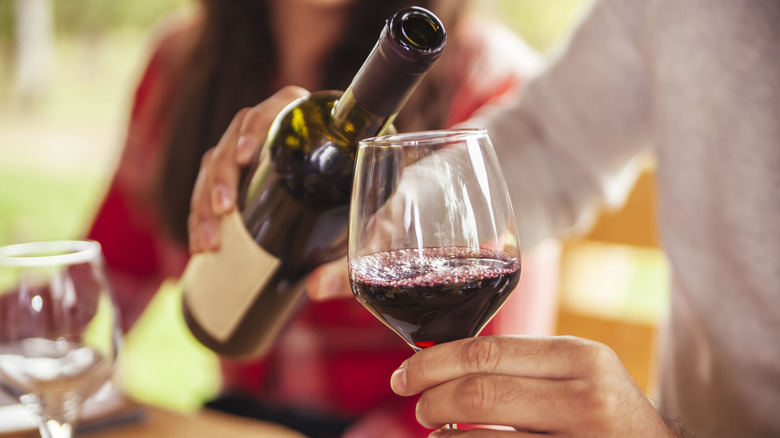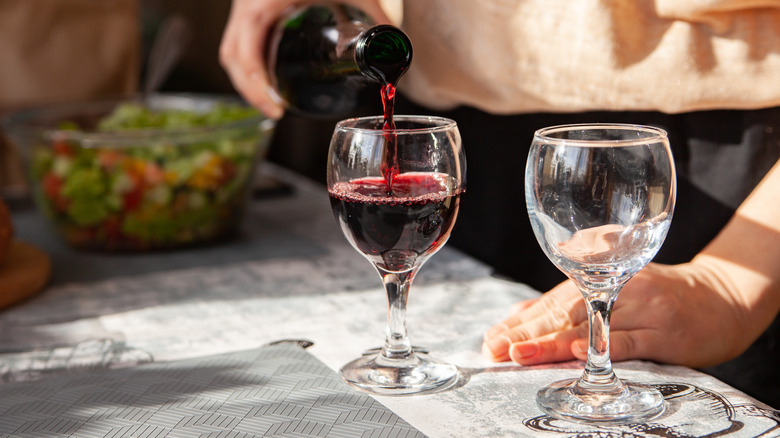The Wine Tasting Mistakes That Make You Look Like A Total Amateur
To the uninitiated, the process of tasting wine can seem a little intimidating. Wine tasting consists of many distinct steps, from swirling the heady beverage in the glass to sipping it in such a manner that you're able to discern every possible flavor note. While it's important to know the vital wine tasting tips for beginners to fully master this process, you should also be aware of how to avoid common newbie mistakes when it comes to sampling wine.
To this end, Daily Meal consulted with Nicki McTague, the chief executive officer of The Infinite Monkey Theorem. This innovative wine shop and tasting space strives to take some of the intimidation out of wine, and McTague is happy to use her expertise to help you avoid common faux pas. For instance, the wine guru is adamant that ice should never be added to wine. As explained by McTague, "Your grandmother may disagree, but adding ice, which will become water, will dull the entire flavor profile." Also, it's important for the tasting area to be smell-neutral, meaning free of external aromas emitted by candles and other items. McTague stated, "In order to capture the aromas which will spark your palate, you can't be distracted by other senses."
Best practices when evaluating a glass of wine
To Nicki McTague, wine is a lot more than just an alcoholic beverage. As eloquently stated by the sommelier, "Wine is an art and something you can look at and enjoy from various angles." Accordingly, wine tasters must assess the essential characteristics of wine, including its appearance. Color is a major consideration in this case, and different types of wine will feature different color qualities. On a basic level, red wine gets its rich color from the anthocyanins found in red grape skins, while the skin is removed from grapes prior to making white wine. But the nuances of color can tell you a lot of about a vintage, for instance, brighter reds are often more acidic, while a wine with a high pH will typically take on an almost blueish tinge.
Aroma is another crucial aspect to consider when tasting wine. McTague recommends that tasters "take note if the smell matches the taste," which indicates a well-balanced wine. Being familiar with the three wine aroma classifications is also helpful when tasting, and these classifications include primary, secondary, and tertiary. Primary aromas are the scent elements that are evident at first whiff, while secondary aromas provide clues to where and how the wine was produced (such as being aged in wood barrels). As for the tertiary aroma, this indicates the age of the wine. While it may take a bit of practice before you're tasting wine like a true professional, McTague's guidance ensures you won't commit any embarrassing blunders along the way.

